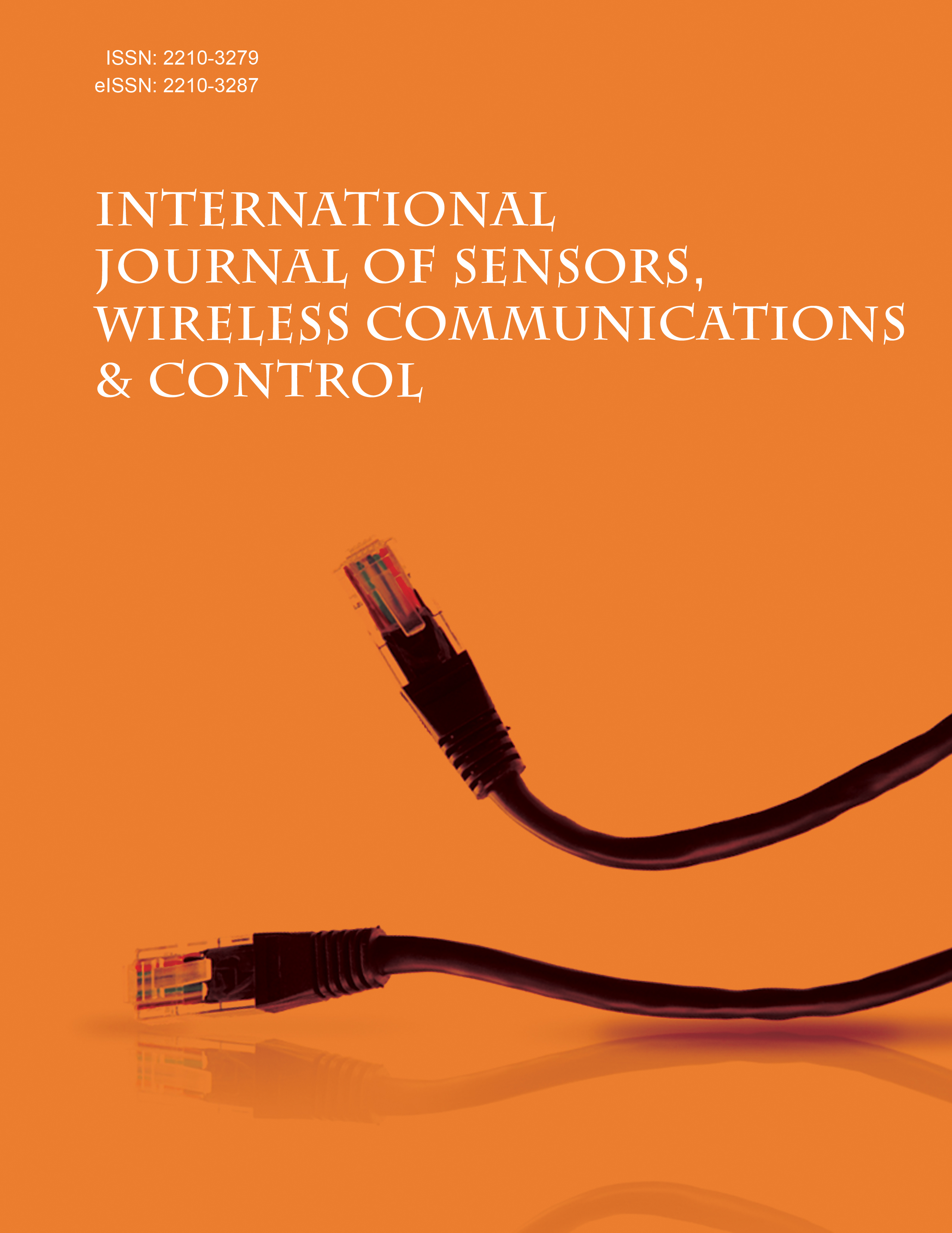- Home
- A-Z Publications
- International Journal of Sensors Wireless Communications and Control
- Previous Issues
- Volume 12, Issue 2, 2022
International Journal of Sensors Wireless Communications and Control - Volume 12, Issue 2, 2022
Volume 12, Issue 2, 2022
-
-
A Study on Security Issues and Attacks, Challenges and Future Improvements in Cloud-based IoT
More LessAuthors: Praveena Nuthakki and Thummuru GunasekharThe Internet of Things (IoT) has become a rising and dynamic research area. It is the integration of numerous objects (things) to communicate information without human beings' intervention. Inappropriately, because of the qualities resource-constrained and limited communication range, it significantly relies upon the Cloud as outsourcing to store and compute the data. This reconciliation of IoT with the Cloud has brought ne Read More
-
-
-
A Survey on Game Theory based Interference Mitigation in WBASN
More LessAuthors: Shilpa Chaudhari, Sumukh N. Aradhya, Sonia B. Thomas, Sonali Pandey and Rohit P. S. DurbhaA wireless body area network (WBAN) consists of several sensors implanted inside a body or placed on a body that help in the continuous monitoring of health conditions such as heart rate. The sensor nodes transmit the data to a central controller, which serves as a gateway to transmit this information to medical servers and then finally to the hospitals for medical attention. Due to multiple body area networks o Read More
-
-
-
A Pill to Find Them All: IoT Device Behavior Fingerprintin g using Capsule Networks
More LessAuthors: Gatha Varma, Ritu Chauhan and Dhananjay SinghAim and Background: The aim of this study is the application of novel deep learning technique of capsule networks for device behavior fingerprinting. Device behavior fingerprinting emerged as an important means to characterize the network behavior of connected devices due to the dynamic nature of smart systems. The study of device behavior fingerprinting strategies gave us an insight into the strengths and w Read More
-
-
-
Proactive Routing Mechanism for Removing Far Sensor in IoT using A Design of B * Index
More LessAuthors: Geetha Sundararajan and Deepalakshmi PerumalsamyBackground: The concern with the IoT node is energy since nodes are depleted as their energy utilization is incrementally reduced with the reduction in far off nodes. The nodes will consume energy when it senses the data, followed with the computation, and further for transmission. Methods: We proposed the phases for energy-saving at nodes by Enhanced Agglomerative Clustering, Dynamic Selection of Leader, disp Read More
-
-
-
Design and Analysis of Improved Dynamic Source Routing Protocol in Vehicular Ad-Hoc Network
More LessAuthors: Ankit Kumar and Madhavi SinhaBackground and Objectives: The present issues faced by the transport systems include enormous traffic jams and congestion, unexpected road accidents, unwanted time delays, pedestrians' crossings on main roads, wastage of fuel, and many more. ITS and some other technologies work together to overcome such factors contributing to a much more desirable transport system. This paper aims to identify the security me Read More
-
-
-
Improved Convolutional Neural Network and Heuristic Technique based on Forecasting and Sizing of Hybrid Renewable Energy System
More LessAuthors: Sweta Kumari, Umesh K. Sinha, Manish Kumar, Sunil Kumar Jangir and Ajay Kumar SinghAims & Objectives: The fast depletion of fossil fuels and the growing awareness of environmental protection have become a concerning topic. Because of this fact, the researchers are working for a long time to generate electrical energy sources due to the intermittent nature of unconventional energy sources such as solar, wind geothermal, tidal, and biomass as a sustainable, cost-effective, and environmentally Read More
-
-
-
Packet Scheduling for Internet of Remote Things (IoRT) Devices in Next Generation Satellite Networks
More LessAuthors: Gbolahan Aiyetoro and Pius OwolawiBackground: The massive amount of deployment of Internet of Things (IoT) devices via wireless communications has presented a new paradigm in next-generation mobile networks. The rapid growth in the deployment of IoT devices can be linked to the diverse use of several IoT applications for home automation, smart systems, and other forms of innovations in businesses and industry 4.0. Methods: There is a need for a robust Read More
-
Most Read This Month
Article
content/journals/swcc
Journal
10
5
false
en


